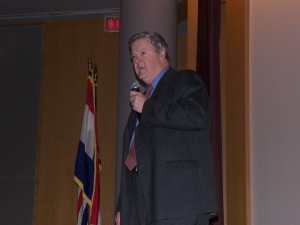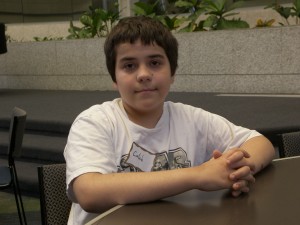Some days, I wake up feeling depressed. I just don’t feel like getting up. My monkey mind starts with ideas like “I’m too tired” and “I just don’t want to face life, especially with this tremor.” Let’s face it, I don’t know a human soul who doesn’t have a bad day or even difficult times. As a counselor, I listen to many situations from serious to everyday annoyances. I’ve begun to notice that everyone has them. As a famous psychiatrist, Viktor Frankl, who experienced a concentration camp once said, “The last of one’s freedoms is to choose ones attitude in any given circumstance.”
This may seem strange to some, but I’ve learned that even challenging situations are signs that positive change is occurring. For example, I have a huge estate on the market which is my dream house. My realtor, handyman, friends and I worked very hard to get the house clean, fixed and ready to sell. I found myself working night and day to paint, clean and stage the house. In the middle of cleaning out my art studio I started to cry for two reasons. One reason was I was selling my dream home, even though I knew it was the right time, it felt like losing a part of me that felt safe and peaceful. The second reason was my tremor was worse and I was overdoing it.
I’ve learned that the best way out of feeling sad or depressed is to do something in order to feel better. I asked myself what would make me feel better. I know that crying is a good release and opens the heart. This was good for me instead of suppressing my emotions. Even men are doing more of it on shows like The Bachelorette when they get disappointed that they lost the girl they had their heart set on. I’m glad that it is OK to feel our emotions these days. Getting out of a depressed state takes action so I asked myself what would make me feel better. I followed my intuition to call a friend to go to a movie. I wanted to get out of the house and I realized that I was hungry too, which can definitely affect my tremors. While eating I explained to my friend my situation and why my shaking was worse than usual. Guess what, it improved by eating and sharing.
When I returned home, I felt better and I was shaking less. I got a good night’s sleep and got busy preparing the house for my Mother to visit me while her bathroom was being converted from a bathtub to a shower. I wasn’t sure I could handle it before my outing, but now I had the energy and faith that all would work out fine. She has a tremor too and can get irritable when her medication isn’t working or when she doesn’t get enough sleep. When she arrived, Mother even made the comment that she thought she might be depressed. I thought to myself, what can I do to help her feel better? I have realized that it is often the little things that help change our attitude. I helped to make her physically comfortable by feeding her and helping her bathe. I then showed her how to play solitaire and mahjong on my iPad. I saw that cute “little girl smile” cross her face. For a couple of hours, Mother forgot she had a tremor and decided she wanted an iPad to play games on and the touch screen was easy for her to use. I ended up giving her one for an early 86th birthday gift (her birthday is not until the end of August). She is now showing other seniors how to use it.
One lady called me on the phone about joining the ET support group. She said that she doesn’t leave the house and has a company bringing food to her. She is 60 years old. I asked her the reason she stays home. I wondered if she had another illness besides ET. Her response was that she lives alone and doesn’t want to eat in a restaurant in front of people. “I think I’m depressed,” she said, “because I don’t feel like doing anything.” I told her that it would take courage for her to come to the meeting but that I know she would feel better if she did. She is working on getting a ride. I hope she comes.
Sometimes embarrassment or social phobia due to tremors can lead to depression. Clinically speaking, depression is described as anger turned inward about a situation, in this case ET, lack of interest in life due to frustration about it. It can cause a person to decide not to feed oneself or function at all. I feel sad when I hear about this lack of freedom. I’ve been there before, until I decided to open up, tell others and find everything I can to feel better, such as medical discoveries, natural remedies or doing the simple things that help me to take action to improve my life.
Most of the time, I’m now waking up as someone with a purpose, a simple one, to love and accept myself and others with or without tremors. I was guided to become a counselor when I decided to take action and ask for a purpose. I will do all I can to research and find new ways of living with or eradicating ET, a condition I have had all my life. I have found that light always shines after darkness. I’ve seen people with tremors so severe that they could barely function and others with less frequency. Some are focusing on what they can’t do and others want to know techniques for feeling better. I now choose the latter. What I love about conferences and support groups is we can all work together to learn from the medical community about research, and experiment and share with each other how we can improve our quality of life each day.
Joan Marie Barringer
HopeNet Board Member




